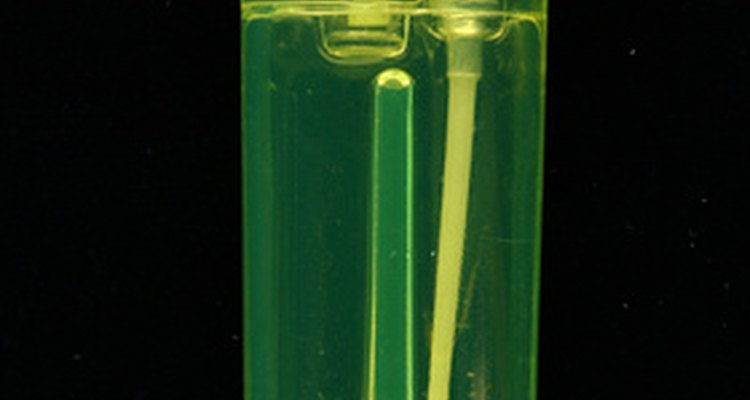
Lighter fluid removes ink because it dissolves bonds the chemicals in ink formed to each other and to the inked surface. Lighter fluid is a solvent--a substance used to dissolve another substance. Solvents may be water-based or oil-based; lighter fluid is oil-based. Substances that do not dissolve in water, such as permanent ink, need to be removed using an oil-based solvent.
Surface Prep Helps Remove Ink
Washing the ink-stained surface with warm water and dish soap breaks the attachments between ink molecules as well as between ink and the object it adhered to. Because dish soap dissolves oils, it allows ink particles to break away from each other and the stained object and go into water solution.
The less surface prep with dish soap you do, the stronger the ink will be bonded to the stained object and other ink particles. Lighter fluid by itself may not dissolve ink bonds to other ink particles or the stained object enough to allow stain removal.
Evaporation and Capillary Action
MSN Encarta defines "evaporation" as the process occurring when a substance changes from liquid to vapor. "Capillary action" is defined as the force that causes a liquid to rise, fall or change shape because of differing strengths of attraction between liquid molecules and a solid.
When lighter fluid evaporates, its liquid molecules are drawn rapidly upward into the air. That process creates capillary action as fast-moving lighter fluid molecules attract liquefied ink particles. The attraction causes ink to rise to the top of the solid, where it can be pulled into any absorbent covering placed on the solid‘s surface. Paper towels and cornstarch powder are good disposable absorbent coverings.
Lighter Fluid's Ink-Removing Properties
Lighter fluid is a liquid composed of petroleum products similar to gas that evaporate and burn easily. According to chemist Bob Atkins, lighter fluid is a mixture of hydrogen and carbon molecules that dissolves non-polar (oil-based) compounds, such as ink and grease.
Like Dissolves Like
The chemistry rule of thumb "like dissolves like" states that weak bonds are formed between similar substances, such as hydrocarbons in lighter fluid and ink molecules containing hydrogen and carbon. This principle states that because lighter fluid is oil-based, it can dissolve oil-based inks.
According to the "like dissolves like" principle, oil-based dish soap works by disrupting bonds oil-based ink forms with other ink molecules and with the stained object. Then capillary action combines forces with weak attractive bonds oil-based lighter fluid creates with dissolved ink oils to move liquefied ink away from the stained object and into a cover material you can easily discard.
Because ink bonds more strongly to other ink molecules than to evaporating lighter fluid, lighter fluid is released into the air and the ink stain is left on the covering paper towel or corn starch for you to discard or vacuum up.
Alternatives for Ink Removal
Lighter fluid vapors are invisible, highly flammable, harmful or fatal when inhaled, and may not disperse quickly. Safer alternatives than lighter fluid exist for ink removal.
Spraying ink stains with hair spray or applying vegetable oil, then rinsing with warm water and dish soap is an alternative method for removal. Chemist Bob Atkins suggests methanol or ethanol as alternative solvents. He adds acetone as another alternative to lighter fluid for dissolving organic (carbon-based) inks but warns that acetone also dissolves paint and many plastics.
Related Articles

What Happens When Oil Reacts With ...
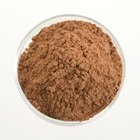
Properties of Bentonite Magmas

How to Make Grapefruit Seed Extract

List of Ingredients for Hask Placenta

How to Remove Liquid Stitch from ...

What Does It Mean When You Have ...

The Ingredients of Neutrogena Sensitive ...

Infusium 23 Leave in Treatment ...
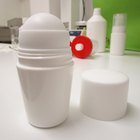
Properties of Propylene Glycol
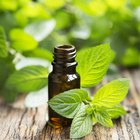
Calories in Peppermint Extract

Can I Use Baking Powder to Thicken ...

Cetaphil Antibacterial Cleansing Bar ...

Ingredients in Maybelline Foundation

Chi Silk Infusion Ingredients

Purpose of Perfume

Merle Norman Ingredients

Noxzema Ingredients

How to Remove Ink From Nylon

Is Allantoin a Relative of the Lanolin ...
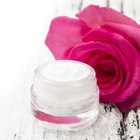
Rosebud Salve for Acne?
References
Writer Bio
Jill Marie Maier is a registered nurse, landscaper and writer. Her articles have appeared in “Alverno Today” and the literary magazine “Inside Out.” Ongoing passions for health, nature and the arts and sciences spurred her to earn English and biology degrees from Alverno College. Her best ideas surface while kayaking.
Photo Credits
lighter plastic image by Warren Millar from Fotolia.com